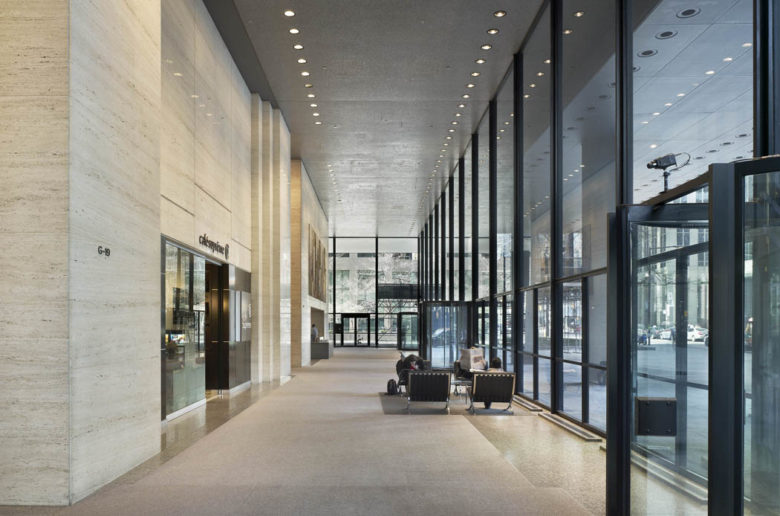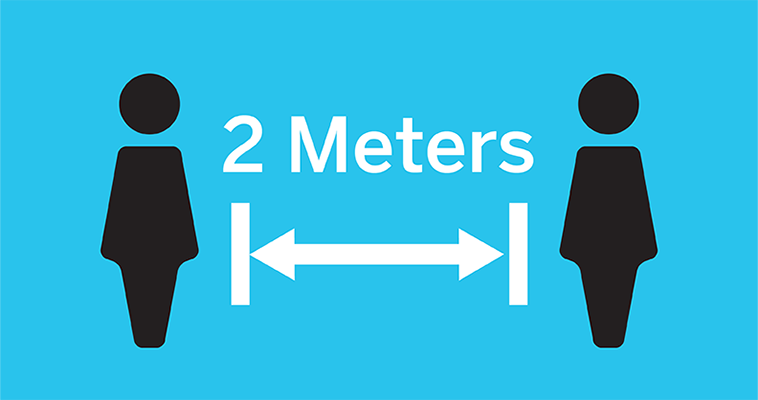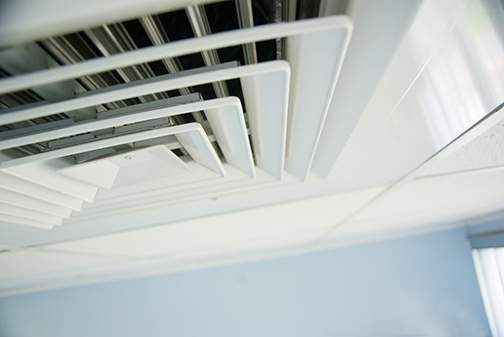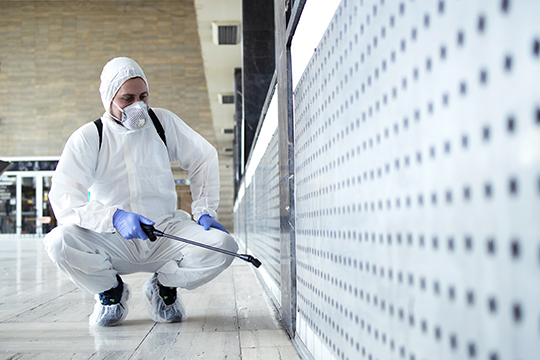
As the economy slowly re-opens, businesses need to plan for restarting operations. Those who require their staff to work in a common location will need to ensure their employees, customers and partners feel safe and can trust that they will be returning to a healthy and clean work environment, both for the near future and for potential second or third waves of infection.
The spread of COVID-19 is generally understood to be through close proximity – by respiratory droplets and aerosols created when an infected person coughs, sneezes, sings, shouts, or talks, and surface transmission. Transmission through HVAC systems is not adequately tested or documented, and available resources (such as ASHRAE) appear to favour an abundance of caution in making any recommendations due to this lack of testing. Our engineers and technology strategists have been exploring the impact of COVID-19 on building design. Here are some considerations for building owners and tenants.

Improving Air Quality In a typical office building, indoor air is comprised of roughly 25% outdoor air. The rest is recirculated and filtered. It will be important to understand what upgrades may be necessary for the building’s HVAC and Building Automation System (BAS), as well as current and emerging technologies to enhance these systems. Simple building operation and system adjustments A first stage of re-entry can include the following, relatively simple adjustments to normal building operation:
- Assess the amount of additional outdoor air for occupied and unoccupied modes of operation to permit increased air exchange in the tenant areas and disable demand-controlled ventilation schemes.
- Review the volume of additional outdoor air that could be added to the system based on current system capacity and further open outdoor dampers to eliminate or reduce recirculation. In milder weather, this does not necessarily affect thermal comfort or humidity, but will become more difficult in extreme weather.
- Assess the site for possible addition of energy recovery units to offset some of the operational costs associated with an increase in outdoor air.
- Make necessary adjustments to building control sequences and changes to set points, such as humidity, to allow for temporary flushing or extended operation of systems.
Design and selection of various filter options for your air handling systems
- Investigate solutions to retrofit or add enhanced filter technologies in existing air handling systems such as higher MERV-rated filters, High Efficiency Particulate Air (HEPA) filters, Active Particle Control filters, UVGI, and Bipolar Ionization.
- Consider portable room air cleaners with HEPA filters.
- Active Particle Control technology filters are claimed by their manufacturers to create collisions on a sub-micron level. This causes smaller particles to collide and stay together becoming larger, and providing the ability to collect the larger particles within normal MERV 13 or higher filters.
- Consider ultraviolet germicidal irradiation to safely and effectively reduce bacteria, viruses and allergens, particularly in high-traffic areas such as lobbies, elevators, and cafeterias/kitchens.
- Bipolar Ionization may also be a beneficial solution to improving air quality. Manufacturer literature states that it inactivates viruses and creates positively and negatively charged ions that attract to other particles and become bigger and heavier. These bigger heavier particles can now be better trapped by MERV 13 or higher-rated filters. Also, many small particles that are generated within a space will drop to the floor quickly, taking them away from where we breathe. It is imperative to understand that the above changes to system operations and addition of certain filter technology will have an associated impact to energy use and cost.
Cleaning of systems
- Consider probiotic cleaning of existing coils and other components in contact with air streams.
- Consider swabs of air handling unit interiors after cleaning and instantly test for presence of Covid-19.
- Consider use of mobile and local air-cleaning solutions in congested areas.
- Re-start and re-establish safe drinking water supply.
- Establish process, protocols, and testing requirements for domestic water systems that have been stagnant during the COVID pandemic.
Technologies for Infection Control in Buildings There are various technologies currently in use or emerging in the healthcare sector that could benefit and be applied to commercial real estate buildings. Real-time locating and monitoring systems
- Hand hygiene compliance–technology such as infrared can be used to better monitor hand hygiene. Can be deployed at hand-washing stations and bathrooms.
- Contact tracing apps can create a contact history log, based on location. They can allow you to accurately track the interactions between people, the facility and equipment. Knowing this information can help to slow the spread of the infection. However, there are privacy implications involved with contact tracing apps which should be carefully considered.
- Occupancy sensors provide real-time information on occupancy and location to indicate whether social distancing or occupancy limits are being respected.
- Building owners and tenants can also send instant communications and alerts through a mobile app to occupants, and provide information to first responders in case of emergencies, including specifying the exact location of the emergency.
Cleaning
- UV lighting technology has improved to the degree that it can sanitize an unoccupied room in a few hours.
- Cleaning robots (currently used in some hospitals) may become normal procedure to clean office buildings or hotels in off-peak hours.
- Occupancy sensors can notify cleaning crews (or the aforementioned robots) that a particular area is vacant and can be sanitized before next use.
Touchless (Hands-free) control
- To minimize potential infection from contaminated surfaces, occupants could utilize mobile apps (through their smartphones) to control security access/opening doors and elevator call. This could be rolled in with existing space management apps used for boardroom booking and office hoteling – which also play a role in effective social distancing.
- Automated or proximity sensor door opening technology.
Social distancing
- To better practice social distancing in the office environment, occupants may prefer to access amenities such as ordering food, dry cleaning notification, building gym occupancy, transit alerts and ride sharing services through an app – possibly one provided by the building owner that integrates in-building amenities and other local services.
- Automated social distancing alerts through wearable technologies or smartphone apps.

- Assess your HVAC systems and explore ways to minimize the impact of virus aerosols.
- Work with the Facilities team to appropriately optimize building systems and controls.
- Investigate and recommend technologies that can help mitigate the spread of infectious disease through sanitization, monitoring, social distancing and other means.

Kevin O’Neill, P.Eng., LEED® AP
Commercial Director
kevin.oneill@hhangus.com




